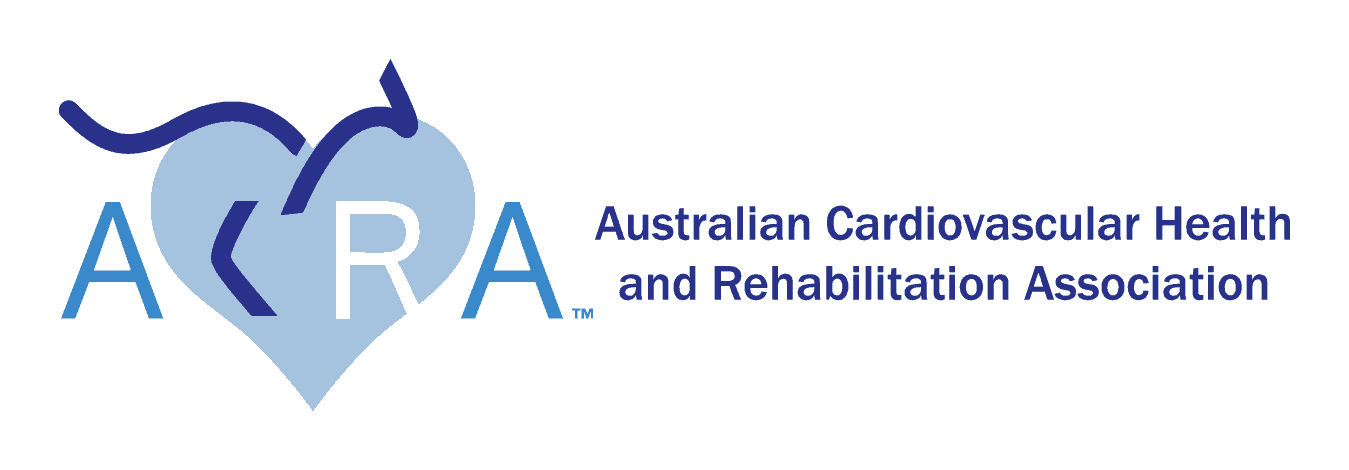Cardiovascular Health and Rehabilitation (CR) is a comprehensive cardiovascular risk factor reduction service for people with, or at high risk of, cardiovascular disease.
Participation in CR has been shown to reduce risk factors, improve quality of life, and decrease morbidity and mortality.
ACRA recommends that five core components underpin CR services
Core Component 1
All eligible patients must be offered referral to a CR service which best suits their individual needs, as soon as possible after diagnosis or before discharge from hospital including a referral to a General Practitioner (GP) for long-term care.
Core Component 2
All eligible cardiac patients to receive an individualised initial assessment that includes physical, psychological and social parameters with referral on to appropriate services (internal or external to the CR service) based on patient needs; followed by ongoing review, discharge assessment and follow-up.
Core Component 3
CR services should facilitate patients to return to, or to improve on, baseline everyday functioning, including employment, driving, resumption of sexual activity, and other activities of daily living and maintain lifelong behaviour change. When the cardiac condition or other co-morbidities preclude this, the CR service should focus on maximising potential and providing coping strategies.
Core Component 4
CR services should be tailored to provide education and skill development to motivate and enable patients to self-care and make changes in their lifestyle, to address multiple cardiovascular risk factors, and to ensure adherence to prescribed medications.
Core Component 5
All CR services must collect a minimum set of data and report on key performance indicators to ensure to promote continuous quality improvement of services and benchmarking.
Woodruffe S, Neubeck L, Clark RA, Gray K, Ferry C, Finan J, Sanderson S, Briffa TG. Australian Cardiovascular Health and Rehabilitation Association (ACRA) core components of cardiovascular disease secondary prevention and cardiac rehabilitation 2014. Heart, Lung and Circulation. 2015 May 1;24(5):430-41.
Testimonials
 Dr Bruce Shirazi, Rehabilitation Specialist, Frankston and Parkdale, Victoria
Dr Bruce Shirazi, Rehabilitation Specialist, Frankston and Parkdale, Victoria
Cardiac rehabilitation gets you better, faster and to a higher level than being left to manage on your own.
 Dr Geoff Abbott, Rehabilitation Consultant, St John of God Frankston Rehabilitation Hospital
Dr Geoff Abbott, Rehabilitation Consultant, St John of God Frankston Rehabilitation Hospital
I feel that Cardiac Rehabilitation should be offered to a large proportion of patients following cardiac events such as surgery, infarction and heart failure as it complements the medical and nursing treatment standards.
 Dr Chris Finn, Cardiologist, Sir Charles Gairdner Hospital, Western Australia
Dr Chris Finn, Cardiologist, Sir Charles Gairdner Hospital, Western Australia
Participation in cardiac rehabilitation serves as the first critical step for preventing future heart attacks. As such, it acts as critical gateway for establishing lifelong habits for the ongoing management of heart disease.
 Dr Johanne Neill, Cardiologist, Ipswich Hospital, Queensland
Dr Johanne Neill, Cardiologist, Ipswich Hospital, Queensland
Having a heart attack is of course a stressful event for all patients. Cardiac rehabilitation is an excellent and evidence based means of supporting patients through this stressful time with education and reassurance, and helping them to gain confidence with their “new normal”.
